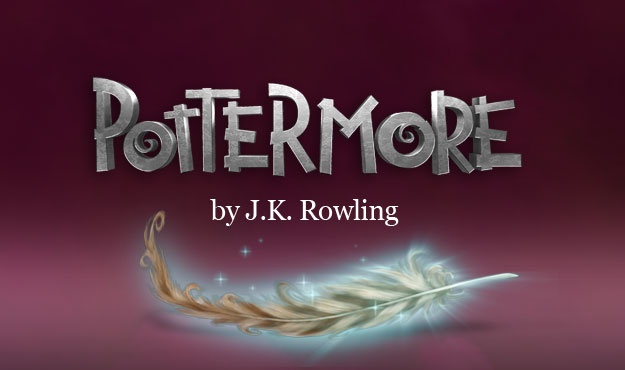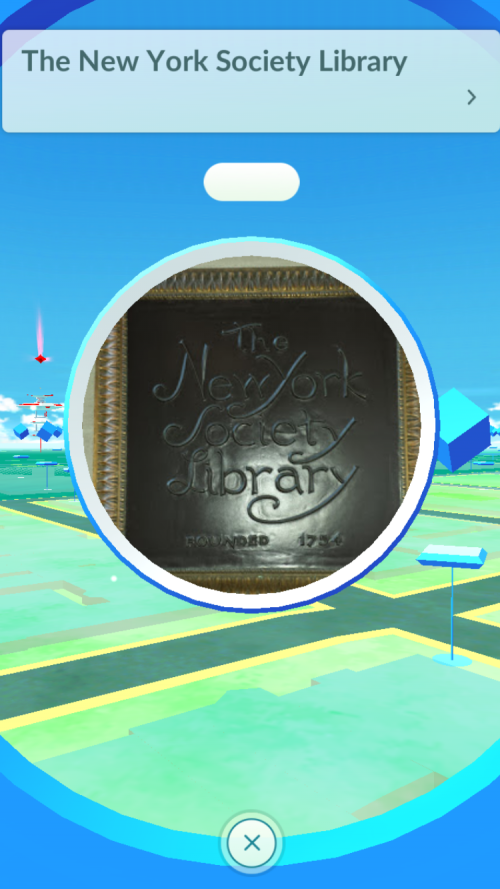Pokémon, Potter, and the Past
What do libraries, Pokémon Go, Harry Potter and coloring books all have in common? The power to transform, inspire, and engage minds through technology. In recent years, technology dealing with immersive roleplaying and augmented reality has exploded. Each game builds on the existing expectations of users to bring a newer, more exciting form of entertainment. As technology grows, cultural institutions such as museums, libraries, and archives have been finding new and fun ways to harness the wonder and popularity of these games to showcase the rich treasures found inside their walls. And the best part? It’s working.
 Pokémon Go is a new game release that enlists augmented reality to allow users to catch Pokémon—digital creatures—in real time. Players can gather helpful items at special stops, battle other players, and catch as many Pokémon, or digital creatures, as they can find. While this may seem like a silly game on the surface, in fact it brings people together at notable and popular places, including museums and libraries.
Pokémon Go is a new game release that enlists augmented reality to allow users to catch Pokémon—digital creatures—in real time. Players can gather helpful items at special stops, battle other players, and catch as many Pokémon, or digital creatures, as they can find. While this may seem like a silly game on the surface, in fact it brings people together at notable and popular places, including museums and libraries.
The information used to create the Pokémon Go stops and battle arenas was taken from a previous game called Ingress. In this game, players competed to take over areas for their specific team color. The areas in competition included museums, landmarks, and even secret architectural treasures. As Pokémon “trainers” rush around the city catching and “leveling-up” their digital creatures, they’re also discovering new places they never knew existed. Museums and libraries are using the popularity of their stops to draw a younger crowd to their stacks and exhibits—allowing users both to play and to connect to the past. This benefits the institution and enriches visitors’ experience.

Perhaps one of the most notable innovations in the e-book industry was Pottermore, the interactive online Harry Potter community. Released after the last book was in readers’ hands, this website was designed as a way to connect readers to their books in a new and immersive way. As readers followed the text of the Harry Potter books, they were able to click hidden images for secret prizes or for expanded reading provided by the author J.K. Rowling.
As they worked their way through the novels, readers could do what the characters were doing, like taking a sorting hat quiz or choosing their wands. This wasn’t just a Harry Potter-themed game, but rather a way for readers to relive—personally—their favorite parts of the book. Not only does this help different kinds of readers to experience the text, it also ensures that these books are never forgotten. In the same line of thinking, several startups such as One Hundred Robots have begun to buy out-of-print picture books in the public domain in order to turn them into interactive apps for children to enjoy all over again.
 Finally, we come to coloring books. This craze has swept the country and doesn’t look to be going away. Rather than cringing at the thought that children may be encouraged to write in books, librarians and archivists have jumped at the chance to share their special collections in ways that their patrons haven’t been able to see in the past. Libraries such as the Smithsonian and yours truly, the New York Society Library, have taken advantage of the love for coloring and created their very own coloring books based on images from books too precious to circulate, but too beautiful not to be seen. You are welcome to print your own coloring book with images specially chosen from our archives.
Finally, we come to coloring books. This craze has swept the country and doesn’t look to be going away. Rather than cringing at the thought that children may be encouraged to write in books, librarians and archivists have jumped at the chance to share their special collections in ways that their patrons haven’t been able to see in the past. Libraries such as the Smithsonian and yours truly, the New York Society Library, have taken advantage of the love for coloring and created their very own coloring books based on images from books too precious to circulate, but too beautiful not to be seen. You are welcome to print your own coloring book with images specially chosen from our archives.
Technology and popular culture have a reputation for being at odds with libraries and museums, especially when new clashes with old. However, as innovative and excited librarians and archivists incorporate more and more technology into their institutions and use it to highlight their collections, it’s clear that the gap between the future and the past may be smaller than we thought.


Disqus Comments